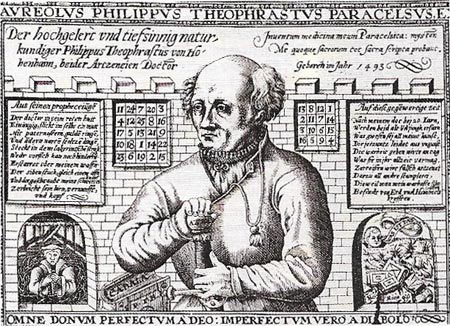If Hahnemann Is the Father of Homeopathy, Then Paracelsus Is Its Grandfather

When we speak of homeopathy, the name that instantly echoes is Dr. Samuel Hahnemann — the brilliant 18th-century German physician who codified a healing system based on the profound axiom: similia similibus curentur, or “like cures like.” His experiments with cinchona bark (used to treat malaria) and the hypersensitivity it produced in healthy individuals led him to a radical rethinking of medicine, birthing the science of homeopathy.
But what if this “modern” discovery was, in fact, a revival of a much older current of medical philosophy? What if Hahnemann’s ideas found their deeper taproot in the mystical, alchemical world of the Renaissance?
My journey to understand the roots and spiritual side of homeopathy led me to Paracelsus — the forgotten grandfather of this healing system.

Nearly 300 years before Hahnemann, there lived a powerful and visionary figure in the fields of medicine, chemistry, and spiritual science: Paracelsus (1493–1541). Born Philippus Aureolus Theophrastus Bombastus von Hohenheim, he later gave himself the name Paracelsus, implying that he was equal to—or even greater than—the renowned Roman medical writer Celsus.
Paracelsus was a Swiss-German physician, alchemist, astrologer, and philosopher. Although many scholars of his time dismissed him for defying conventional thinking, he fearlessly challenged the medical traditions of his day. His revolutionary ideas—many of which were far ahead of his time—continue to resonate with the fundamental principles of homeopathy.
This sounds strikingly similar to Hahnemann’s later articulation of “like cures like.” But Paracelsus wasn’t merely hinting — he was practicing this principle through what he called “signatures” and potentized substances, which bore mysterious resemblance to homeopathic remedies.
Alchemy, Energy, and the True Nature of Healing
Paracelsus strongly believed in the teachings of alchemy, which viewed the body, nature, and the universe as deeply connected through unseen energies. He thought that every illness started not just in the body, but at a spiritual and energetic level. He believed every illness had a spiritual and energetic origin and that each plant or mineral carried a “signature” — a subtle vibrational pattern that mirrored a specific human condition.
Paracelsus even wrote about spagyric medicine, where substances were broken down, purified, and recombined in a way that closely resembles the succussion and potentization process Hahnemann later formalized.
If we think Hahnemann created homeopathy all by himself, without any outside influence, we miss the bigger picture. His ideas were part of a long tradition of wisdom — shaped by ancient Egyptian teachings, Hermetic philosophy, alchemy, and the work of Paracelsus. These deep and old sources all flowed together to give birth to what we now call homeopathy.
In fact, Hahnemann himself was well-versed in alchemical literature and was likely influenced (either directly or indirectly) by the writings and ethos of Paracelsus. The mystical framework, the energetic understanding of the body, the focus on subtle dosage, and the belief in nature’s innate healing intelligence — all find roots in Paracelsus’ works.
Paracelsus once said:
“Medicine is not only a science; it is also an art. It does not consist of compounding pills and plasters; it deals with the very processes of life, which must be understood before they may be guided.”
Hahnemann, the founder of homeopathy, shared the same understanding. He believed that true healing goes beyond physical science and includes a spiritual and energetic connection — making medicine both a science and an art.
Why This Connection Matters Today
Understanding and acknowledging Paracelsus as the “grandfather” of homeopathy is important because it shows that homeopathy didn’t appear suddenly or out of nowhere. It is part of a long, continuous tradition of healing that stretches back through history. This connection helps us see homeopathy not just as a modern alternative medicine, but as part of a wider and deeper way of understanding health and healing — one that respects the unseen forces that affect life, nature, and human consciousness (like energy, spirit, and the body’s natural intelligence).
In a world increasingly drawn to holistic healing, the Paracelsian-Hahnemannian lineage offers a powerful reminder: True healing is both science and spirit, chemistry and consciousness.
~ Prem Krishnan
